Innovation Assignment: Novel Value Proposition Of Lister Hospital, UK
Question
Task: You are required to write a 2000-word innovation assignment for a novel value proposition within Lister Hospital, UK. You must use appropriate headings to structure the body of the report?
Answer
Introduction
The report on innovation assignment aims at the identification of an innovative strategy or trend that acts as the driving force of a novel value proposition within the context of an existing business organization. It also provides a chance of engaging in innovative and creative practices in the course of developing a new value proposition in alignment with an existing business enterprise.
The problems to be solved
The global healthcare industry has seen an exponential rate of increase in medical expenses. With the growing population and ailments hospitals, especially Lister Hospital of UK has been encountering innumerable issues in case of overcrowding, work overload and many more (Zois, 2016). It has experienced a delay in ambulance services responses in the previous month as well as the loss of various medical pieces of equipment (Aulet, 2017). Physicians of the hospital who are appointed in providing care facilities at home to the geriatric section living independently also struggle to meet with their requirements owing to high workload. In this scenario, there is an immediate requirement of the establishment of innovative techniques to solve the after-mentioned issues that are faced by Lister Hospital, UK.
Problem Insight
According to Amiri, (2019), Almost 68% of the hospitals as well as health care centres in the UK have encountered a rise in the crowds of patients that arguably suggests a strain in the hospital staff. There were several instances in the Lister Hospital of UK, where staffs have struggled to provide their time to every patient within the premises owing to the overcrowding of the place at the night of 31st of December,2019 (Amiri, 2019). The healthcare industry has often found itself in a state of despair as the global population is on the rise, and health services are costlier.
The basic healthcare is becoming soon "out of approach" for the masses, and a huge chunk of the society is bound to go unproductive due to old-age. Another issue discussed in the innovation assignment that has been experienced by Lister Hospital is having difficulty in monitoring the patients at their home or paying a daily visit to them (Azimi, 2018). In the past month, the ambulance personnel of Lister Hospital also got delayed by 30 minutes in reporting back to the Hospital. Thus, an innovative trajectory of conducting all these operations must be taken with the help of to recover from the above-stated issues.
Portfolio of generated solutions
Almost 90% of the hospitals in the UK are bound to face the above-mentioned issues which are required to be solved with appropriate strategic innovation by Lister Hospital to gain a competitive advantage over others operating in the same. It is stated in the innovation assignment that the implementation of the Internet of Things(IoT) can be looked upon as a suitable measure to have end-to-end connectivity with patients as well as its ambulance personnel (Negashet al., 2018). The Center of Connected Health policy reported that there was a reduction of 50% in the "30-day readmission rate" in a UK health centre due to remote patient monitoring.
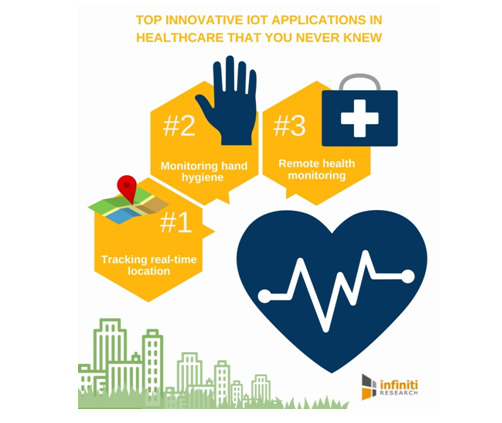
Fig 1: Innovative applications of IoT in Healthcare sector
(Source:Negashet al., 2018)
Providing patients wearable like bands, fitness watches would help to monitor and gather real-time data by the physicians. It would also help them to monitor their blood sugar levels, chronic attacks and others without having to pay them a visit at their homes (Mutlaget al., 2019). On the other hand, IoT enables machine-to-machine communication, data mobility and information exchange monitoring the activities of ambulance personnel. I get real-time data of their location market.
Solution Selection
On-time-alert is one of the most crucial aspects of the healthcare industry. Medical IoT for smart devices accumulate vital data and patient information and transfer them to the clinical doctors and the physicians, along with dropping notifications to end-users of their families via linked devices. Incorporation of innovation, including IoT for smart-devices the healthcare industry, can be re-defined (United Nations, 2015). Real-time-alerting and tracking of patient's health like their blood pressure; glucometer will provide the staff of the Lister Hospital to prove each of their parents with personalized attention.
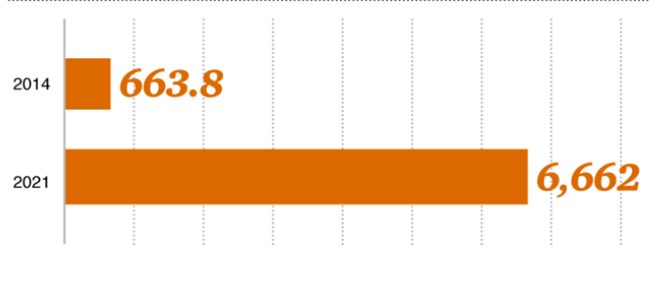
Fig 2: Increase in demand of IOMTs IN UK Healthcare Sector
(Source:Negashet al., 2018)
The issue regarding the shortage of times of daily patient visits by a physiotherapist can also be solved. IoT would undoubtedly solve humongous time, along with being cost-effective. Remote monitoring would help save a lot of money even in the case of the patients.Porter& Heppelmann, (2017), have indicated that IoT for smart devices like fitness bands, watches and other wearables diminished 82% of the possibility of accidents related to delays. On the other hand, it would also help to keep track of the ambulances and their staff and their timely response to the patients by the authorities.
Novel Value Proposition
In the course of introducing IoT devices of smart devices that will help in a generation, exchange as well as mobility of crucial real-time data of patients and various nuances if their health would eventually create demand amongst the same in the market. Due to its cost-effectiveness as well as fast-paced nature, the patient or the end-users and the doctor, staff or physicians would be growing fondness for its usage as various crucial health data and information regarding patients would be with them at the batting of an eyelid (Li, 2019). This innovative strategy discussed in the innovation assignment would help revolutionize the health service trajectory for elderly patients by enabling constant-tracking of their health conditions, starting from calories count, sugar levels, heart rate monitoring with cuffs and more.
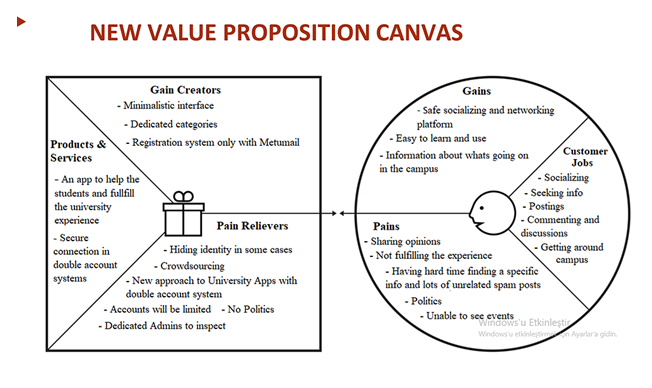
Fig 3: New Value Proposition Canvas
(Source:Li, 2019)
Various wearable and monitoring equipments embedded with “IoT” will also spare the physicians in having to make regular visits at the houses of the patients. The IoT tagged with sensors will help the hospital authority in tracking the real-time location of several medical equipments like defibrillators, wheelchairs, nebulizers and the ambulances staff (Zois, 2016). All of the mentioned benefits that will be provided by the application of IoT devices automatically create a new value for themselves in the market irrespective of whether it is patients,health-care providers(doctors/physicians) or the hospital authorities with its unique nature of being cost-effective and less time-consuming.
Who are the targeted customers in the present case of innovation assignment?
Smart-devices and IoTs have reportedly changed the whole face of healthcare, especially for elderly patients. There is a huge chunk of geriatric patients; almost 2.1 million are living alone in the UK with proper primary health-care facilities (Negashet al., 2018). With the assistance of home monitoring equipment, wearables like heart rate cuffs watch to monitor the sugar level, glucometer help the healthcare facilities to provide integrated and immediate medical attention to this section of people. These devices will help the staff and physicians of Lister Hospital to be more watchful and connect with their elderly patients who live independently, proactively.
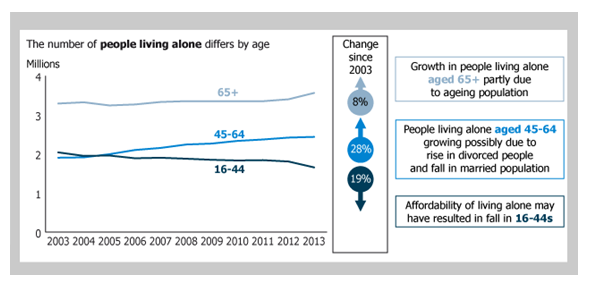
Fig 4: Percentage of Geriatric section living independently in UK
(Source:Negashet al., 2018)
This will also have a huge impact on the families of the geriatric group that are living alone as any sort of disturbances or variances in the routines of the activities of the patients with the help of the devices will send alert signals to their families as well as primary caregivers. “Real-time monitoring” via connected smart-devices has saved innumerable lives at the event of medical emergencies like asthma attacks, diabetes and heart failure (Mutlaget al., 2019). Thus, the target-customers for application of these IoT devices will be the geriatric section of the care-seekers who live independently and aim at receiving primary health-care services.
Competitive Advantage
Recently Malaysia has scored that first rank in the category of World's best healthcare system in 2019," International Living Global Index". One of the key reasons for its sophisticated infrastructural development is the integration of IOMT or Internet of Medical Things in its trajectory of healthcare facilities.
Smart medical devices collecting, mobilizing, exchanging and transferring crucial health data to their doctors and physicians help in providing the end-users with heightened accuracy and personalized treatment to the patients. Increase in the involvement and accountability of patients in their health progress that also promote transparency is one of the few things that medical facilities or most hospitals in the UK provide (Carsonet al., 2018). This technology-driven set up also helps in bringing down the cost by cutting short the routine medical checkups from "hospital-centric activities'' to home-centric that entails high expense and a large amount of time.
Thus, Lister Hospital can capitalize on the factors of cost-reduction and time-consumption in garnering the attention of its existing clients and prospective clients (Hagiu & Wright, 2020). These factors would eventually help the organization to gain additional competitive advantage based on cost-effectiveness in increasing medical expenditures IN the healthcare industry of the UK.
Strategic Fit
Strategic Fit of any organization inducted to proper utilization of non-financial as well as financial resources as well as competencies of the organization in case of aligning it with the demand of the external market (Aulet, 2017). These linkages thoroughly guide the decisions of how various operational and organizational strategies applied and the measure of its viability in case of gaining the organization a competitive advantage in the market.
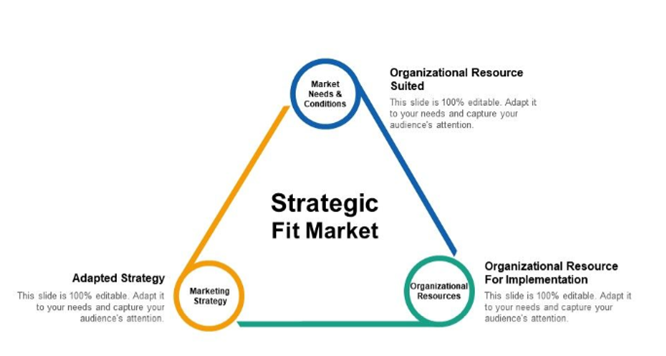
Fig 5: Strategic Fit
(Source:Aulet, 2017)
In case of this scenario, Lister Hospital should implement the innovative strategy of incorporating smart devices or IOMTs in its various operational activities that would provide real-time information to the staff of the hospital automatically increasing the quality of the customer services (Brackley & York, 2019). With the help of capitalizing these resources, which are cost-effective and less time consuming, the hospital can expand its consumer base, looking at the market scenario of increasing medical treatments expenditures.
Assessment of appropriate Business model assumption and its uncertainties
In this case scenario of innovation assignment, the value-proposition canvas can be applied as it refers to the introduction of any product or innovative services that are positioned thoroughly following the market requirements of consumer’s needs. It was introduced by Alexander Osterwalder to ensure the fit between market and product. The value proposition canvas is used when there is a requirement of refining an existing service or product in the market. It is formed of two blocks; one is "customer value proposition” and customer profile.[Referred to Appendix 1]
The second model is a business model canvas that refers to a strategic management tool that helps in communication of a business concept. It assists in working through the fundamental documents element of a new business idea in- structuring the products and its execution plans cohesively.
The third tool that could be considered herein innovation assignment is Innovation Mode by David Bland refers to systematically testing the business ideas and propositions that help in the reduction of the existing risks as well as helps in the increase of likelihood of success. It integrates the assumptions mapping and various other lean startup-styles or experiments. The fourth tool that could be considered is the Quantity of Value Proposition. This strategic framework indicates the quantity of the value that is created to the consumers of end-users with the help of the introduction of the new service or facility in the market (Osterwalderet al., 2004). The quantitative metrics are calculated to indicate the value to the consumers. [Referred to Appendix 2]
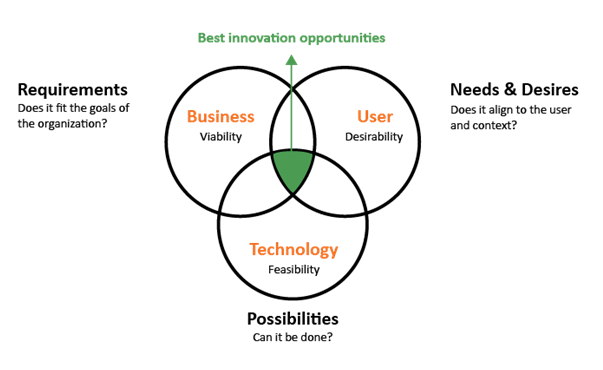
Fig 6: Innovation Model Framework
(Source:Aulet, 2017)
The fifth strategic and innovative tool addressed in the present context of innovation assignmentis Porter's five forces that emphasize on the five key factors of bargaining powers of suppliers and customers, the threat of new entrants and threat of substitutes. This framework also immensely helps individuals envisioning of introducing new services or products in the market.
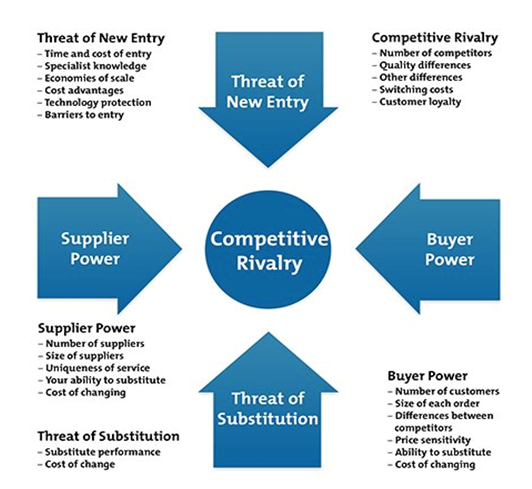
Fig 7: Porter’s five Forces of Competition
(Source:Aulet, 2017)
It facilitates in analyzing the external market threats like that of new entrants and substitutes while focusing on the bargaining power of the suppliers and the consumers (Pearl& Madvig, 2020). Some uncertainties are attached with the middle such as obscurity regarding the staff getting the hang of the new model, uncertainties regarding competitors introducing the same services and facilities and also a reduction in employment opportunities for home-based care providers.
Argumentation for selection of innovative tools
Selection of all the above-mentioned strategic frameworks has its benefits as well as prolificity. The Business Canvas Model prepared in the innovation assignment assists in systematically arranging the operational activities that the plan of introducing the product or service in the market entails (Osterwalder & Pigneur, 2010). On the other hand, porter's five forces and quantity value proposition assists in understanding the viability that the product would have on the external market and its performance.
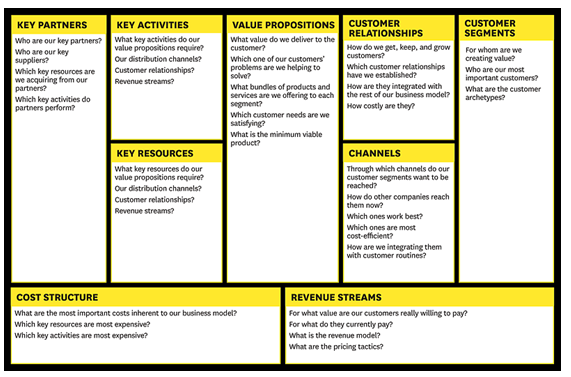
Fig 8: Business Canvas Model
(Source:Aulet, 2017)
Candid and critical self-reflection
In the course of undertaking the entire trajectory of identifying a viable innovative service that is required to be introduced by Lister Hospital, I have come in terms of various innate competencies like self-directed learning and sound analytical skills when selecting the appropriate services that also have a feasible market demand. However, in case of selecting the mode of structuring the whole funding, I came to know about the vulnerabilities. I need to focus on the regions of properly arranging various tasks that I am required to undertake as I often get baffled owing to the large volume of tasks that are to be undertaken by me.
Conclusion
The report on innovation assignment culminates the introduction of IOMT things that provide a real-time solution by analyzing, exchanging and mobilizing the data to the staff of Lister Hospital. The IOMT in the guise of wearable and watches would help in changing the whole face of healthcare facilities by helping the physicians, doctors as well as the hospital authorities in gathering useful data within a minimalistic time-span. In the case of health-care seekers, its benefits would be presented as an innovative technique which is both cost-effective and less time-consuming.
Reference List
Aulet, B. (2017). Disciplined entrepreneurship workbook. Hoboken, New Jersey: Wiley.
Bland, D. J., & Osterwalder, A. (2020). Testing business ideas. Hoboken, New Jersey: Wiley.
Brackley, A., & York, B. (2019). What's next for sustanaible business? Retrieved from https://trends.sustainability.com/
Carson, B., Giulio Romanelli, Walsh, P., & Zhumaev, A. (2018). Blockchain beyond the hype: What is the strategic business value?Innovation assignmentRetrieved from https://www.mckinsey.com/business-functions/digital-mckinsey/our-insights/blockchain-beyond-the-hype-what-is-the-strategic-business-value Davenport, T. H., & Ronanki, R. (2018). Artificial intelligence for the real world. Harvard Business Review, 96(1), 108-116.
Grijpink, F., Kutcher, E., Ménard, A., Ramaswamy, S., Schiavotto, D., Manyika, J., . . . Okan, E. (2020). Connected world: An evolution in connectivity beyond the 5G revolution. McKinsey Global Institute. Retrieved from https://www.mckinsey.com/industries/technology-media-and-telecommunications/our-insights/connected-world-an-evolution-in-connectivity-beyond-the-5g-revolution
Hagiu, A., & Wright, J. (2020). When data creates competitive advantage. Harvard Business Review, 98(1), 94-101.
Iansiti, M., & Lakhani, K. R. (2017). The truth about blockchain. Harvard Business Review, 95(1), 118-127.
Iansiti, M., & Lakhani, K. R. (2020). Competing in the age of AI: how machine intelligence changes the rules of business. Harvard Business Review, 98, 60+.
Li, C. (2019). Maersk – Reinventing the shipping industry using IoT and blockchain. Digital Initiative.
Manyika, J., Chui, M., Bughin, J., Dobbs, R., Bisson, P., & Marrs, a. A. (2013). Disruptive technologies: Advances that will transform life, business, and the global economy. Retrieved from https://www.mckinsey.com/business-functions/digital-mckinsey/our-insights/disruptive-technologies McKinsey Global Institute. (2018, June). AI, automation, and the future of work: Ten things to solve for.
McKinsey Quarterly. Retrieved from https://www.mckinsey.com/featured-insights/future-of-organizations-and-work/ai-automation-and-the-future-of-work-ten-things-to-solve-for Osterwalder, A., & Pigneur, Y. (2010). Business model generation. Hoboken, New Jersey: Wiley.
Osterwalder, A., Pigneur, Y., Bernarda, G., & Smith, A. (2014). Value proposition design. Hoboken, New Jersey: Wiley.
Pearl, R., & Madvig, P. (2020). Managing the most expensive patients: A new primary-care model can lower costs and improve outcomes. Harvard Business Review, 98(1), 68-75.
Porter, M. E., & Heppelmann, J. E. (2014). How smart, connected products are transforming competition. Harvard Business Review, 92(11), 64-88.
Porter, M. E., & Heppelmann, J. E. (2015). How smart, connected products are transforming companies. Harvard Business Review, 93(10), 96-16.
Porter, M. E., & Heppelmann, J. E. (2017). Why every organization needs an augmented reality strategy. Innovation assignmentHarvard Business Review, 95(6), 46-57.
Tilley, J. (2017). Automation, robotics, and the factory of the future. Retrieved from https://www.mckinsey.com/business-functions/operations/our-insights/automation-robotics-and-the-factory-of-the-future
United Nations. (2015). Transforming our world: The 2030 agenda for sustainable development. Retrieved from https://sustainabledevelopment.un.org/post2015/transformingourworld/publication United Nations. (2019). Sustainable development goals. Retrieved from https://www.un.org/sustainabledevelopment/sustainable-development-goals
Appendices
Appendix 1: Innovation Model Framework
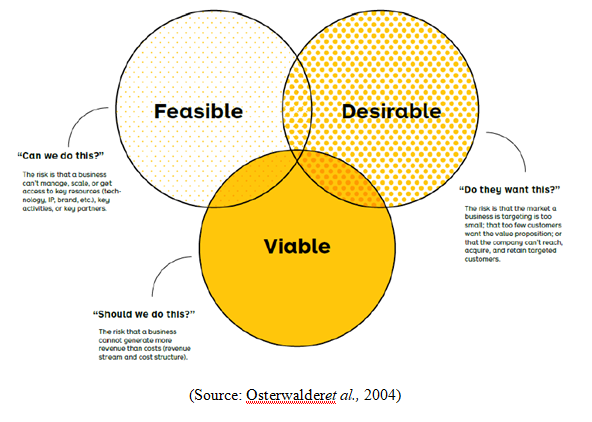
(Source: Osterwalderet al., 2004)
Appendix 2:Value Proposition Canvas
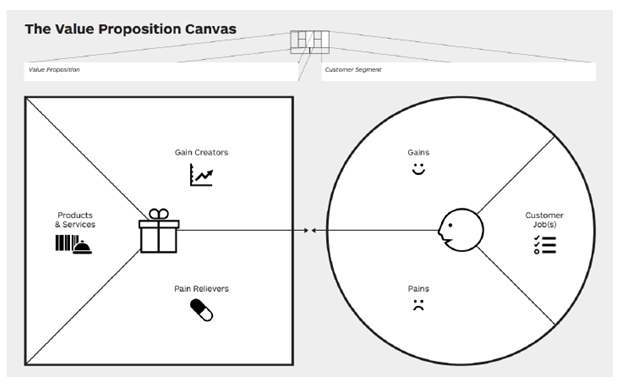
(Source: Osterwalder& Pigneur,2010)












